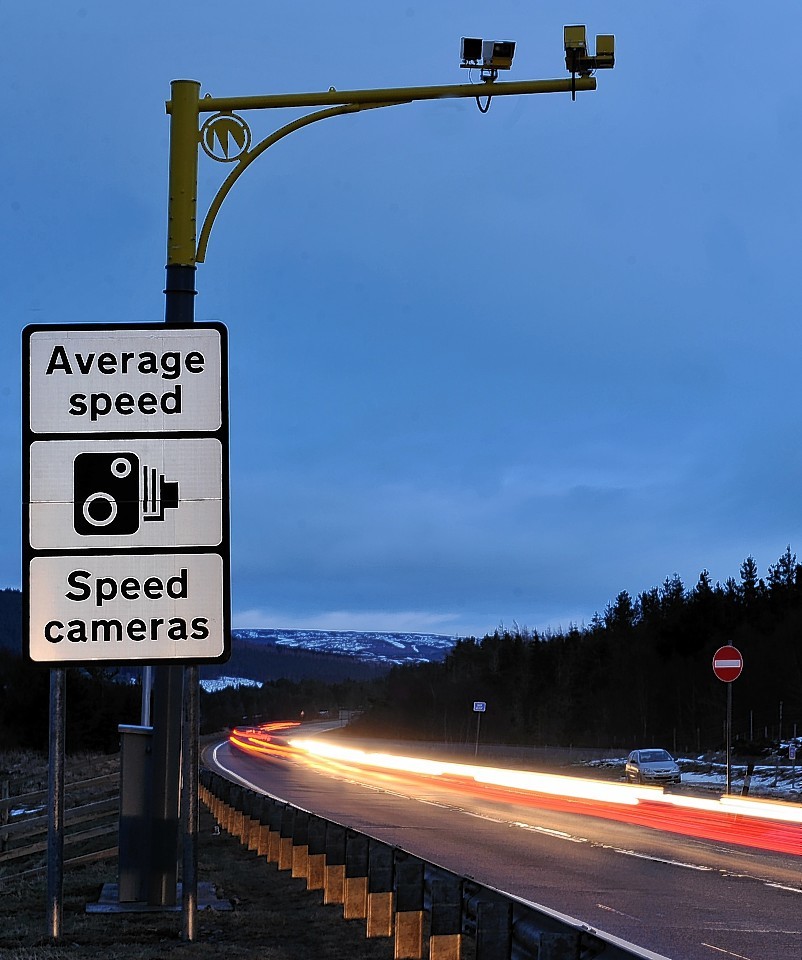The controversial A9 average speed cameras have been hailed for cutting road deaths and serious injuries 18 months after they went live.
New figures released by the group responsible for the “yellow vultures” said that the number of people seriously injured on the road has fallen by 70% in the time the cameras have been in operation.
The report was released as it was revealed that average speed cameras are now monitoring 250 miles of British roads.
The scheme went live in October 2014 and covers the road between Inverness and Dunblane – with the 99 miles the longest section of road permanently monitored by cameras in the UK.
The latest figures cover up to the end of April with the A9 Safety Group saying they show a “sustained improvement” in driver behaviour and road safety.
However, critics of the scheme pointed to rising journey times on the key route which links the Highlands with the central belt.
The report reveals that the number of fatal and serious accidents between Dunblane and Inverness is down by almost 44% compared to the baseline figures for the same period prior to the cameras being installed.
Seven people have been killed on the A9 between Perth and Inverness over the first 18 months – with the most recent being on a single carriageway section near Dalwhinnie in February.
The incident is still under investigation but police have confirmed that it is not believed to have been caused by excessive speed.
Analysis of speeding figures found that the number of drivers exceeding the limit has dropped from one in three to just one in ten.
Police and the A9 Safety Group revealed that over the first 18 months a total of 6,914 vehicles have been detected by the speed cameras in excess of the limit – an average of 13 every day.
However, with more than 10,000 vehicles using the Perth to Inverness section and 24,000 between Perth and Dunblane – this works out at a compliance of 99.97%.
A9 Safety Group chairman Stewart Leggett said: “The A9’s improved road safety performance continues as the latest figures show the majority of drivers continue to respect the speed limits.
“With road deaths down 30% and the number of people seriously injured down over 70%, today’s results confirm the A9 is a safer place now than it was before the A9 Safety Group began its work.
“Fewer incidents are disrupting traffic and along this key route and these improvements have been delivered against a background of increasing traffic volumes and improved journey time reliability.”
However, journey times have shown a slight increase of between one to nine minutes depending on the day of the week compared to before the speed cameras came into force.
Mike Burns of the A9 Average Speed Cameras Are Not the Answer said that the figures also do not fully reflect like for like comparisons because the baseline comparison is up until 2013, omitting 2014 up until the cameras went live.
He added: “The effect of deteriorating journey times is not fully represented and they are outside what Transport Scotland said they would be before the cameras.”
Conservative Highland MSP Douglas Ross said the priority for the road should be completing dualling rather than speed cameras.
He added: “It is very good news that the number of serious injuries and deaths are down.
“However, I don’t believe that can be attributed solely to the average speed cameras.
“The driving public are more aware than ever of the dangers having seen so many terrible accidents on the road over time.
“There’s also construction ongoing on the road which means that traffic is moving slower than ever.”
Chief Superintendent Andy Edmonston, head of road policing for Police Scotland said: “We welcome the continued progress being made in casualty reduction on the A9 between Inverness and Dunblane.
“Police Scotland will continue to work with our partners to ensure this progress is maintained and we will continue to challenge those who put themselves and others at risk through inappropriate driving behaviour, including speeding.”










